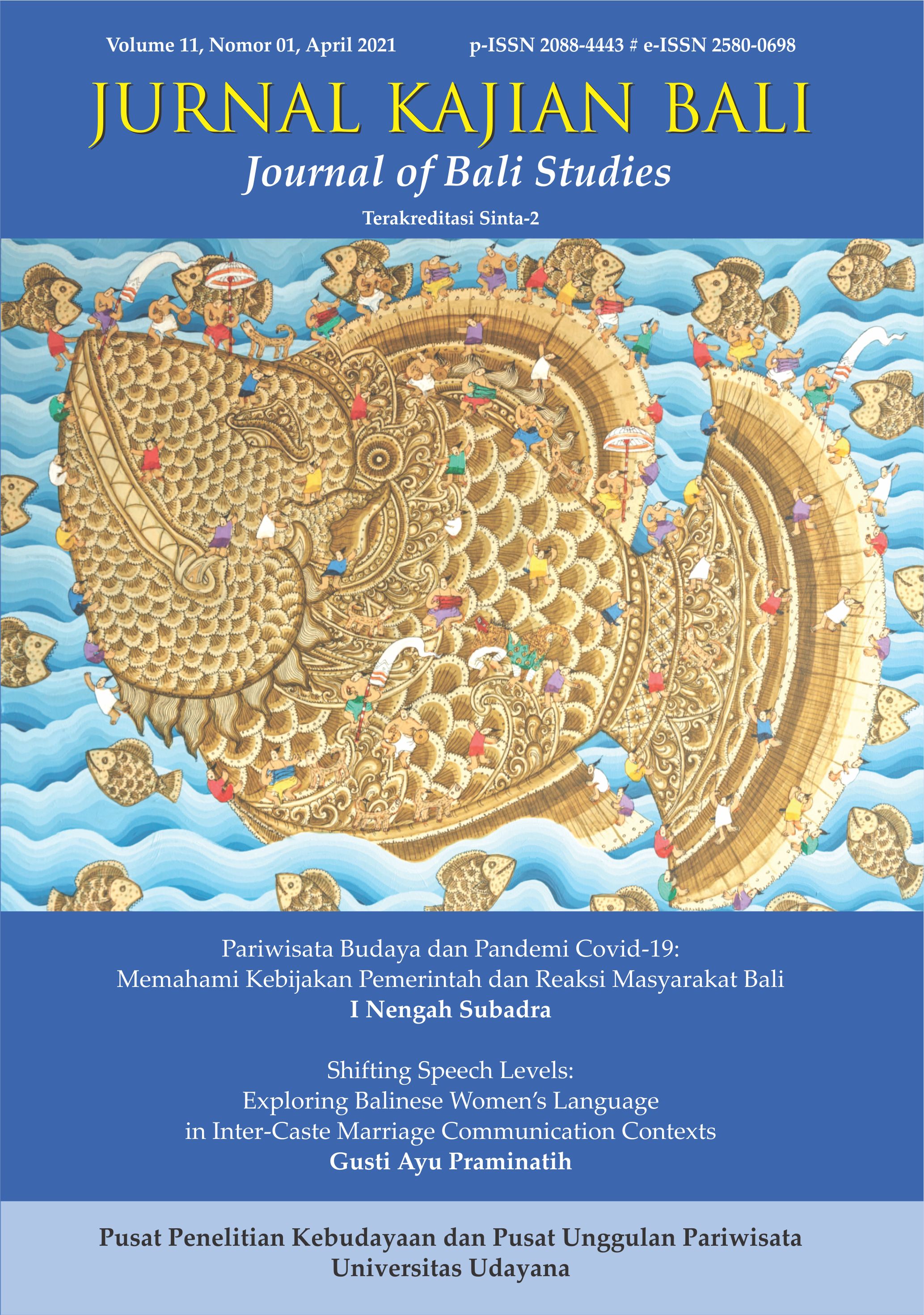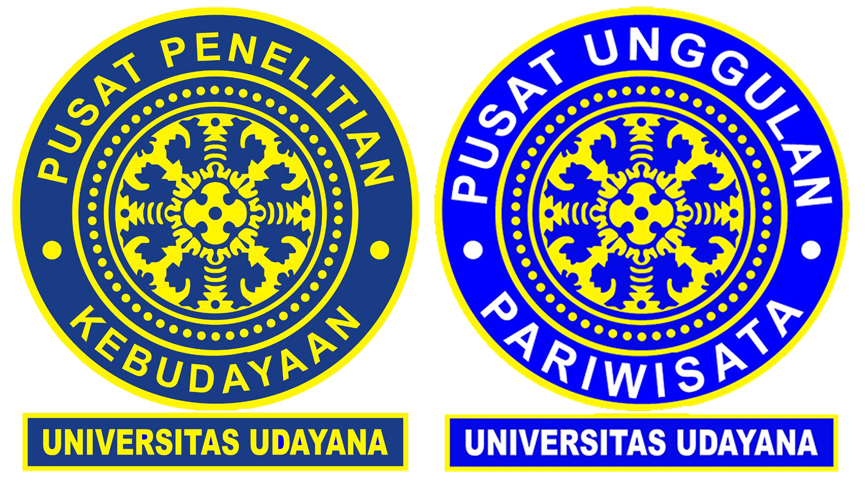Dimensi Brand Loyalty Bali sebagai Destinasi Wisata bagi Wisatawan Nusantara pada Masa Pandemi Covid-19
Abstract
Brand loyalty is a long-term strategy to gain a competitive advantage in tourist destinations during the Covid-19 Pandemic era, which demands more efforts for destination managers to survive. On the other hand, the dimensions used to measure brand loyalty cannot yet be agreed upon because of the complexity and diversity of perceptions. The purpose of this study was to determine: (i) the dimensions of Bali brand loyalty as a tourist destination; (ii) the efforts made to develop tourism in Bali during the Covid-19 Pandemic. This research uses a quantitative approach supported by qualitative. To test the construct of brand loyalty, the confirmatory factor analysis (CFA) technique was used with the AMOS program version 24. There were 120 respondents with the criteria that they had visited a tourist attraction in Bali at least twice. The results showed that: (i) the construct of brand loyalty is supported by cognitive, affective, conative and behavioural dimensions, where the dimension of behaviour plays a dominant role; (ii) efforts can be made by disciplined application of health protocols and promotion through social media.
Downloads
References
Ajzen, I dan Fishbein,M. (1980). Understanding Attitudes and Predicting Social Behaviour. New Jersey: Prentice Hall.
Alit, Bagus. (2020). Aturan Liburan ke Bali Wajib Rapid dan Swab PCR, Kunjungan Wisatawan Diprediksi Turun. Bali Detail Berita.< https://bali.inews.id/berita/aturan-liburan-ke-bali-wajib-rapid-dan-swab-pcr-kunjungan-wisatawan-diprediksi-turun.>.Dilihat tanggal 17 Desember 2020
Andiani, Nyoman Dini et al. (2020) . Peran Nilai Hindu “Tri Kaya Parisudha” dalam Peningkatan Loyalitas Wisatawan Terhadap Desa Wisata Pedawa, Bali Utara. Jurnal Kajian Bali (Journal of Bali Studies), 10 (2), pp. 603–624.
Anom, IP dan Mahagangga, IGAO. (2019). Handbook Ilmu Pariwisata Karakter dan Prospek. Jakarta: Prenadamedia Group.
Bandyopadhyay, S., & Martell, M. (2007). Does attitudinal loyalty influence behavioral loyalty? A theoretical and empirical study. Journal of Retailing and Consumer Services, 14(1), pp.35–44.
BPS Provinsi Bali. (2020). Perkembangan Pariwisata Provinsi Bali Juni 2020. Berita Resmi Statistik.
Cheng, H.,Bynner,J.,Wiggins,R and Schoon,I. (2012). The Measurement and Evaluation of Social Attitudes in Two British Cohort Studies. Social Indicator Research, 107(2), pp.351–371.
Daher, A. M., AlMashoor, S. H. A., & Winn, T. (2016) . Performance of the Malay Audit of Diabetes Dependent Quality of Life-18 and Associates of Quality of Life among Patients with Type 2 Diabetes Mellitus from Major Ethnic Groups of Malaysia. PLOS ONE, 11(10), pp.1-14
Delgado‐Ballester, E., & Luis Munuera‐Alemán, J. (2001). Brand trust in the context of consumer loyalty. European Journal of Marketing, 35(11/12), pp.1238–1258. doi:10.1108/eum0000000006475
Dharmesta, Basu Swasta. (1999). Loyalitas Pelanggan: Sebuah Kajian Konseptual sebagai Panduan Bagi Peneliti. Jurnal Ekonomi dan Bisnis Indonesia Volume 14 Nomor 3.
Divianta, Dewi. (2020). Cegah Virus Corona, Ratusan Turis Ditolak Masuk Bali Regina Bai Nusra
Fajri, Silvia Nur. (2020). Viral, Potret Wisatawan Asing Berkumpul Tanpa Terapkan Protokol Kesehatan di Bali. News Daerah.
Hair, Joseph F Jr., Black,William C., Babin, Barry J. and Anderson, Rolph E. (2019). Multivariate Data Analysis. Eight Edition. Hampshire :Cengage Learning EMEA. ISBN: 978-1-4737-5654-0
Hitchcock, M. and Putra, I Nyoman Darma. (2007). Tourism, Development and Terrorism in Bali. England: Ashgate Publishing Company.
Janita, D. (2005). Perspektif Baru Dalam Strategi Branding. Jakarta: Amara Books.
Kotler, P. dan Amstrong, G. (2007) . Dasar-dasar Pemasaran Edisi Kesembilan. Jakarta: LIndeks.
Lee, R., & Lockshin, L. (2011). Reverse Country-of-Origin Effects of Product Perceptions on Destination Image. Journal of Travel Research, 51 (4), 502–511.
Lee, R., Lockshin, L., & Greenacre, L. (2016). A Memory-Theory Perspective of Country-Image Formation. Journal of International Marketing, 24 (2), 62–79.
Liu, Y., Hultman, M., Eisingerich, A. B., & Wei, X. (2020) . How does brand loyalty interact with tourism destinations? Exploring the effect of brand loyalty on place attachment. Annals of Tourism Research, 81, 102879. doi:10.1016/j.annals.2020.102879
Nuruddin., Wirawan, P., Pujiastuti, S., & Sri Astuti, N. (2020). Strategi Bertahan Hotel di Bali Saat Pandemi Covid-19. Jurnal Kajian Bali (Journal Of Bali Studies), 10(2), 579–602.
Pitana, I Gde dan Diarta, I Ketut Surya. (2009). Pengantar Ilmu Pariwisata. Yogyakarta: Penerbit Andi.
Putra, I Nyoman Darma. (2017). Pengantar Editor. Jurnal Kajian Bali (Journal Of Bali Studies), 7 (2), iii-vi.
Putra, Rizki Akbar. (2020). Mampukah Pariwisata Bali Bertahan di Tengah Badai Corona?.Beranda Indonesia.
Praptono, Didik Dwi. (2020). Kadishub Akhirnya Ungkap Alasan Banyak Oknum Warga Lolos Masuk Bali. Dwipa
Rosidin, Imam. Kurniathi,Pythag, dan Ika, Aprilia. (2020) . Wisatawan Batal ke Bali karena Aturan Tes PCR, Sekda: Ini "Cost" yang Kita Bayar untuk Jaga Keseimbangan.NewsRegional.
Simamora, B. (2001). Memenangkan Pasar dengan Pemasaran Efektif dan Profitabel. Edisi Pertama. Jakarta: PT. Gramedia Pustaka Utama.
Subadra, I Nengah. (2020). Coronavirus (COVID-19) and Bali Tourism, https://www.balitourismdirectory.com/bali-tourism-watch.html. Diakses 10 November 2020 07.20 pm
Suhartanto, D. (2011). “An Examination of The Structure and Determinants of Brand loyalty across Hotel Brand Origin. ASEAN Journal on Hospitality and Tourism. Volume 10 No.2. pp. 146-161
Suhartanto, D., Brien, A., Primiana, I., Wibisono, N., & Triyuni, N. N. (2019). Tourist loyalty in creative tourism: the role of experience quality, value, satisfaction, and motivation. Current Issues in Tourism, pp.1–13. doi:10.1080/13683500.2019.1568400
Suhartanto, D., Brien, A., Sumarjan, N., & Wibisono, N. (2018). Examining attraction loyalty formation in creative tourism. International Journal of Quality and Service Sciences, 10(2), pp.163–175.
Suprapti, Ni Wayan Sri. (2010). Perilaku Konsumen. Denpasar: Udayana University Press
Waluyo, Minto. (2016). Mudah Cepat Tepat Penggunaan Tools AMOS dalam Aplikasi SEM.Surabaya: UPN Veteran.
Windia, I Wayan. (2020). Beralih ke Pertanian, Masih 72 Persen Tanah Bali dapat Digarap. http://www.balipost.com/news/2020/03/02/107091/Beralih-ke-Pertanian,Masih-72...html
Wisnawa, I. M. B., Wijayanti, A. A. R., & Jokosaharjo, S. (2019). Tourists Expectation And Perception Toward Sangeh Tourism Village. Journal of Business on Hospitality and Tourism, 5(2), pp. 60-69.
Wisnawa, I.M.B. (2018). “Brand loyalty at Chain Hotel in Denpasar”, E-Journal of Tourism, Volume 5 Number 1 pp.1-8.
Wisnawa, IMB., Prayogi, PA dan Sutapa,IK. (2019) . Manajemen Pemasaran Pariwisata : Model Brand loyalty Pengembangan Potensi Wisata di Kawasan Pedesaan. Yogyakarta: Dee Publish.
Wisnawa, IMB. (2018). Brand loyalty pada Inna Group Bali. Disertasi. Denpasar: Universitas Udayana. https://sinta.unud.ac.id/uploads/dokumen_dir/0ea034108b77d8126f1c428f2c719cc9.pdf
Xinhui, Chen.,and Han, Duan. (2016). A meta analysis of Consumer Irational Purchase Behaviour Based on Howard-Sheth Mode. Journal of Busines and Retail Management Research (JRMBR). Vol. 10 Issue 3, pp. 69-80

This work is licensed under a Creative Commons Attribution 4.0 International License.



















